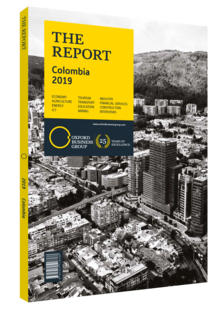Juan José Echavarría Soto, General Manager, Banco de la República: Interview

Interview: Juan José Echavarría Soto
What is Colombia’s current economic outlook?
JUAN JOSÉ ECHAVARRÍA SOTO: Colombia can pride itself in having a resilient economy, with growth rates of around 3.5% annually over the last 30 years. Despite stagnant growth in recent years, we are progressively returning to previous levels, with an expected GDP growth rate of 3.5% for 2019. The inflation rate, which reached a high of 7.5% at the beginning of 2017, is also now progressing towards 3.2%. The stability of the peso has been adversely impacted by volatility in global markets and by the increase in US and European interest rates. However, the exchange rate has been falling, which is beneficial for the country, making Colombia more competitive and attractive to foreign investment. The markets see Colombia, Chile and Peru with a positive outlook, as they become safe havens within a region that has been afflicted by instability.
The main challenge faced by the new administration will be finding new sources of income to finance the country’s development, while simultaneously implementing reforms to pursue its diversification policies, improving competitiveness across a number of key sectors and maintaining low deficit and inflation rates. As usual, the implementation of a new fiscal regime will be a challenge for this government.
How is the financial services industry set to evolve?
ECHAVARRÍA: The financial services sector is experiencing a period of transition, with new regulations progressively being implemented, such as Basel III and the Law of Financial Conglomerates. With regards to the latter, we seek to strengthen the sector against uncertainty. Disparities in regulatory oversight, increases in Federal Reserve interest rates and rising oil prices have made this region more volatile; thus we need to safeguard ourselves from exogenous pressures. While foreign banks adhere to the Basel III guidelines, local banks are trailing behind and may need additional capital to respond to new requirements. Nevertheless, initial results to stress tests across the sector have been positive.
Banks’ portfolios of non-performing loans were negatively impacted by specific cases, such as Electricaribe or the Ruta del Sol 2 highway, which had trickle-down effects across the sector. However, the quality of portfolios have recently been improving, albeit at a slow pace. Interest rates for mortgages and consumer loans have also been trending downwards which will incentivise household spending. However, banks remain cautious, with more stringent lending policies aimed at those with positive credit scores.
While the upper tier of the population is served by commercial banks, the lower segments have been supported by the public sector, with varying levels of success. A certain number of policies have increased the number of individuals with bank accounts, but their actual usage remains limited. While new technologies have had a profound effect on how people use money across the world, Colombia’s financial services industry is lacking solutions to local needs. Banco de la República is looking to enter this segment of the market in order to fill the gap.
In which ways does the banking sector play a role in financing infrastructure projects?
ECHAVARRÍA: Colombia’s lack of infrastructure has led to a number of government projects aimed at strengthening our logistics network. While many of these projects have faced problems since their inception, they are now gaining traction. However, with more stringent global banking requirements, funding these large projects will require participation from all stakeholders, including local and international banks, multilateral development banks and private funds. Financiera de Desarrollo Nacional has started utilising mini-perm financing models and allowing foreign banks to finance projects in Colombian pesos to incentivise foreign investment in improving infrastructure.
You have reached the limit of premium articles you can view for free.
Choose from the options below to purchase print or digital editions of our Reports. You can also purchase a website subscription giving you unlimited access to all of our Reports online for 12 months.
If you have already purchased this Report or have a website subscription, please login to continue.

